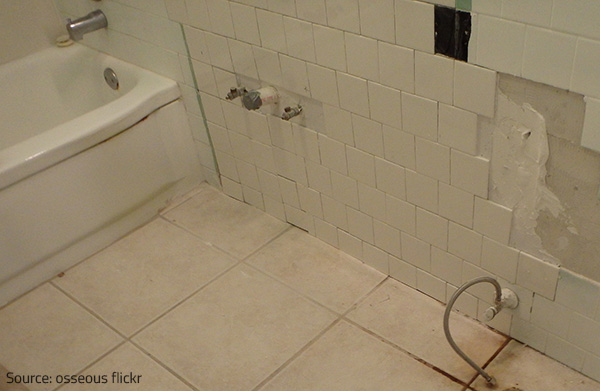Each person maintains their personal piece of advice with regards to Common Causes of Water Damage in a Bathroom.

The washroom is incredibly vulnerable for moist accumulation and potential water damage due to the frequent use of water in it. This short article provides simple inspection strategies to help detecting water damages hazards.
The constant use of water in the washroom makes it incredibly vulnerable for damp accumulation as well as possible water damage. By inspecting it routinely, you can minimize water related damages.
The adhering to set of examinations is easy to do and also ought to be done as soon as in every three months in order to maintain your bathroom in good shape as well as to stop prospective water problems caused by the tub, the shower, pipeline joints as well as plumbing, sinks, closets, and the bathroom
Do not forget carrying out these examinations and be detailed while performing them. Remember that these simple evaluations can conserve you a lot of money by supplying very early indications for water damages
Bath tub and Shower
The shower as well as bathtub need unique attention and upkeep. Examine the tiles as well as change if fractured. Make sure that there is no missing cement in between the tiles. Evaluate and replace split caulking at joints where the wall surfaces fulfill the floor or the tub. Blocked drains pipes and also pipes problems will stop the bathtub from drying as well as might show serious problems below the tub. Seek advice from a specialist immediately to prevent structural damage. Take note of stainings or soft locations around the bath tub walls as they may indicate an internal leak.
Plumbing
Signs for water damage are difficult to discover considering that the majority of pipelines are mounted inside the walls.
Pay special focus to floor covering and walls wetness as well as discolorations as they might show an invisible plumbing problem. Inspect wetness degrees in adjoining rooms as well.
Sinks and Cabinets
Sinks and also closets are revealed to dampness and also moisture day-to-day as well as are commonly ignored. Examine consistently under the sink as well as on the counter top above it. Repair any drip in the trap as it might recommend drainpipe issues. Take a look around the sink, sluggish draining pipes may show a blocked drainpipe. Replace sink seals if they are broken or loose.
The Bathroom
The toilet is a susceptible water junction. Check the water lines and search for leakages around the commode seat, in the tube, and also under the water storage tank. If you discover any signs of dampness on the flooring around the toilet, check for leakages in the toilet edge and tank seals.
Realize that hanging bathroom bowl deodorants increases the possibilities for blockages.
Water Damage Signs In The Bathroom To Avoid Cleanup
Musty smell
This is one of the easiest signs to catch because musty smells are so odorous. The damp, earthy, moldy smell should be a big red flag. The smell will develop when moisture gets trapped in surfaces, and begins to facilitate mold growth. Leaking pipes under cabinets, inside walls, and behind shower fixtures will cause moisture to stay trapped and not dry, which will lead to mold growth and spread. As soon as you notice any musty smells in your bathroom, have it checked for hidden water damage and cleanup signs.
Visible mold
If the smell isn’t there to give it away, sometimes you will actually see mold growth. Finding mold in your bathroom is a serious problem, because mold is very harmful to your health. By the time mold growth is visible, it also means that water damage has already occurred and been present for some time. The only way the mold problem can be resolved is to find the source of the moisture and get it stopped. To safely and adequately remove mold, you need to have professionals handle the remediation. Do not waste any time in getting mold problems addressed, fixed, and sanitized so that you can protect you and your family from the many respiratory symptoms caused by mold exposure.
Damaged floors
Bathroom floors should be able to withstand some exposure to water while still remaining in good condition. However, when excess exposure or water leaks occur, they will begin to damage even the most water-resistant flooring. If you notice any cracking, bubbling, staining, or warping on your bathroom floors, there is probably a water leak somewhere causing the distortion. If you notice areas of the floor have become softer, or even have a spongy feeling, there is probably damage to the subfloor. Subflooring is typically made up of plywood. When plywood is exposed to water or moisture, it will absorb it. Once it has become saturated, the weight of the excess water will cause the wood to swell and soften. Check the floors in your bathroom frequently to catch any of these sings before they lead to damaged subflooring.
Changes on walls
When water leaks behind walls, it will cause changes in the drywall. Peeling plaster, blistering paint, and soggy wallpaper are all good indicators that excess water is building up behind the wall. Water leaking behind drywall will cause it to swell and be soft to the tough. If you start to notice gaps along the trim of your walls, or where tile meets the wall, it could also be a strong indicator that there is a leak behind the wall. Any changes, distortion, or damage on the walls should be evaluated as soon as you notice it to prevent further water damage and cleanup.

We had been guided to that report on How to Prevent Bathroom Water Damage from a friend on a different web address. So long as you enjoyed reading our article if you please be sure to share it. Thank you for your time. Visit us again soon.
Details Here